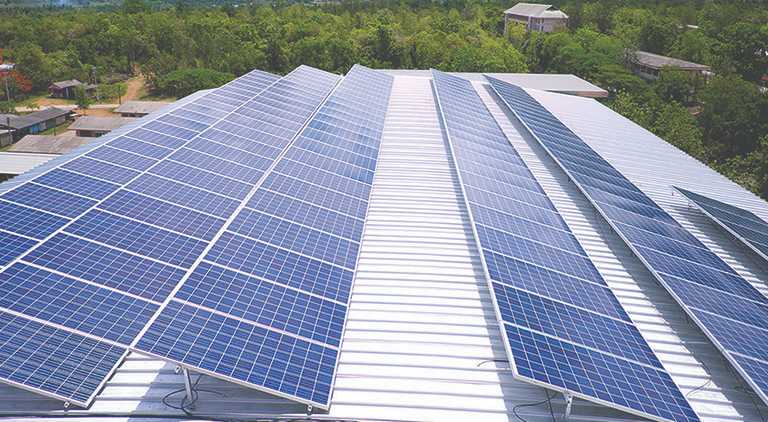Best solar solutions for your rooftop
By EPR Magazine Editorial November 27, 2020 4:53 pm IST
By EPR Magazine Editorial November 27, 2020 4:53 pm IST

Featuring some of the advanced offerings for rooftop solar segment
According to the recent BP Statistical Review of World Energy 2020, renewables account for 10.4 per cent of power generation globally. In 2015, the Prime Minister Narendra Modi-led Indian government had set a target to achieve 175 GW of grid-connected renewable electricity capacity by March 2022 and the target for rooftop solar PV is 40 GW. Accordingly, several policies have been formulated to boost solar energy generation in India.
As per a research report by ResearchAndMarkets, Indian solar rooftop market exhibited an increase in solar rooftop capacity addition from 38 MW in 2012 to 3,855 MW in 2018, expanding at a compound annual growth rate (CAGR) of around 116 percent during 2019-24. Apart from formulation of favourable government policies, some of the other key growth drivers for rooftop solar in India include growing awareness about renewable energy sources among masses, increasing investments, rising cost competitiveness and tax benefits/subsidies. Building smart cities is also contributing to the growth of the market.
The biggest advantage of installing rooftop solar panels is that they offer cost savings. According to Giridhara Vasu, CEO, Green Clouds Renewable Energy (GcRE), “The most significant advantage of rooftop solar is that it requires a one-time investment and generates steady power over two decades – the life of a rooftop solar system is 25 years.”
Solar system components
Rooftop solar systems include solar panels, a mounting system, and a solar inverter with computerised controller. Solar panels produce DC electricity from sunlight and then the inverter converts the generated electricity into AC for use in the household. The computerised controller manages the solar system and ensures optimal performance. A battery is required in case of a battery backup system or an off-the-grid solar system.
Rupees-per-watt or rupees-per-kilowatt-hour: “The solar industry has been measuring costs based on rupees-per-watt capacity and rupees -per-kilowatt-hour generation. But adding batteries to a PV system increases the cost,” adds Vasu.
App based Monitoring: According to Vasu, cell phone or mobile apps are the standard for customer system monitoring. For these apps to work, reliable inverter communications to a server somewhere in the cloud is a necessity. Although Wi-Fi are convenient and relatively cheap, they are dependent on customer’s router and internet connections — not exactly the reliability. Hard-wired Ethernet or high-bandwidth cellular/mobile protocols are better for the reliable communications needed for customer apps.
With rich experience in utility company, Ashone Solar has an advantage over electrical activity – faster net metering helps customer in monetary gain by early solar billing.The most significant advantage of rooftop solar is that it requires a one-time investment and generates steady power over two decades – the life of a rooftop solar system is 25 years.
Giridhara Vasu, CEO, Green Clouds Renewable Energy (GcRE)
We use cookies to personalize your experience. By continuing to visit this website you agree to our Terms & Conditions, Privacy Policy and Cookie Policy.